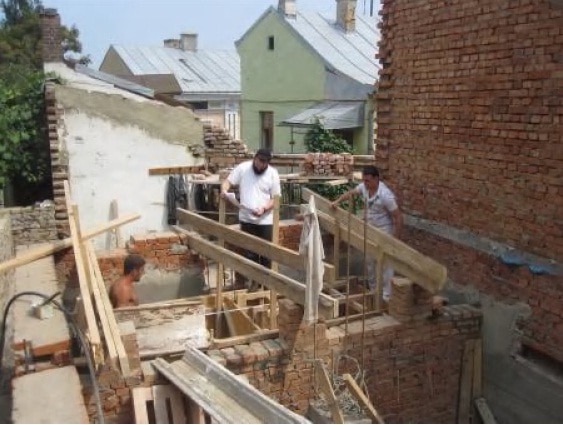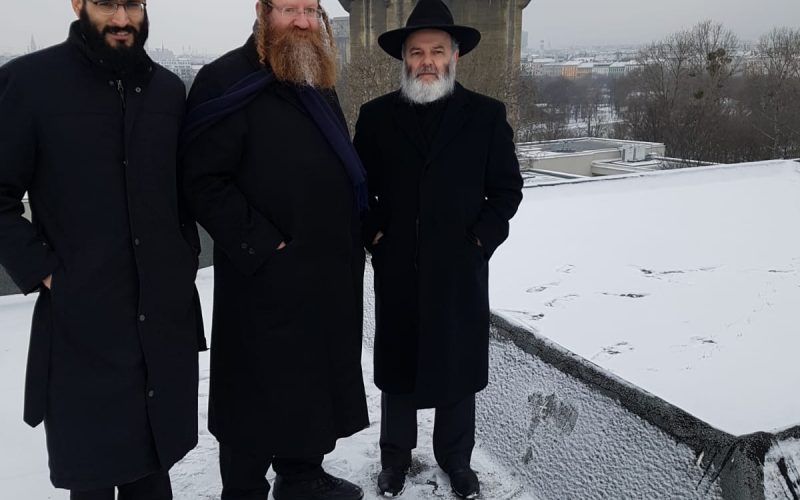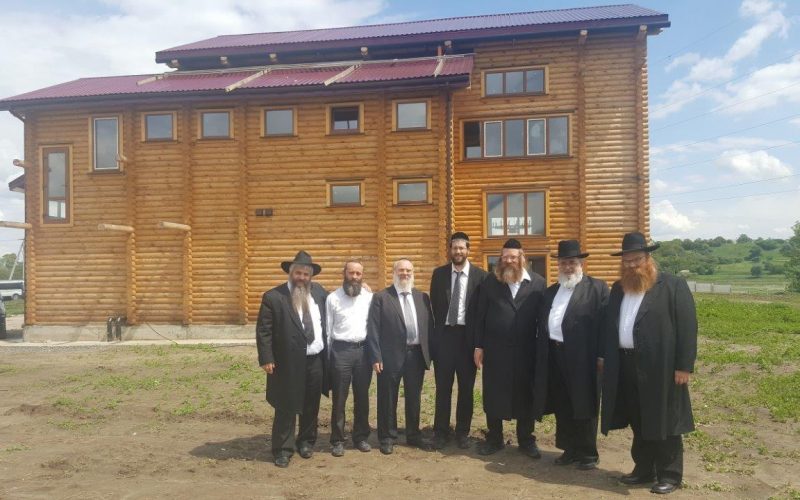The Rabbinical Centre of Europe Large Mikveh Project

Under the auspices of this project, 25 mikva’ot [ritual baths] are being constructed throughout Europe. Funding includes 1,500,000 Euros, provided by the Rabbinical Centre of Europe, with the assistance of the Matanel foundation and EJDF fund. This project forms an invaluable contribution to the development and reemergence of Jewish communities throughout Europe. We are proud to a present an additional report of four locations where this project is under way:
Orenburg (Russia)
The city of Orenburg is located in southeastern Russia on the shore of the River Ural, next to the border with Kazakhstan.
Capital of the Orenburg province, the city is named after the River Or, which passes through the city.
Orenburg is the cultural and commercial centre of the entire region. Jewish life in the city first began in 1806 and continued until the end of the nineteenth century, when the local Jewish population was slightly more than 1200. This number began to increase in 1941, when the Germans conquered Russia’s western regions, leading to a wave of migration to the city.
Today, Jewish life in Orenburg has been revived, and there is a Jewish school and a large shul, and during the year the city hosts the ג€Jewish Book Festival.ג€
Population: 549,000
Jewish residents: 7,000
Chief Rabbi: Rabbi Joel Myers
State of mikveh: In the final stages of construction
Smolensk (Russia)
Smolensk is located on the edge of the upper reaches of the River Dnieper. During World War I and the Russian Civil War that followed, the city was overrun by the Germans, who included it within the People’s Republic of Belarus. In 1919, the Communists announced the founding of the Soviet Socialist Republic of Belarus in Smolensk, but the seat of government was transferred to the city of Minsk when it was liberated from the Germans. In August 1941, the Red Army tried to push out the Germans, who had advanced toward Moscow, in the Battle of Smolensk. The Germans suffered heavy losses, but the city only finally fell on 10th September, and on 25th September 1943, the city was liberated. In 1985, the city was awarded the title ג€the Heroic City of the Soviet Union,ג€ for its resistance to the Germans in 1941.
Population: 315,588
Jewish residents: 5,000
Chief Rabbi: Rabbi Levi Yitzchok Mondschein
State of mikveh: The wells and roof of the mikveh have been molded
Irkutsk (Russia)
This city lies at the outflow of the Angara River into Lake Baikal, at the lake’s southwestern corner. Irkutsk was founded during the seventeenth century as a shield against a Tartar invasion. During the Soviet period, the city, which is in the centre of Siberia, served as a place of exile for individuals, chiefly involved in the fields of humanities and literature, who were discredited by the government. This has turned Irkutsk into a vibrant city with a unique population. Today, Irkutsk is the capital of Siberia. Most of its houses date from the Soviet Golden Age, but there are also many, older wooden houses. The wooden houses in Irkutsk and the rest of Siberia are decorated with unique wooden decorations in their windows. No decoration resembles another. It is very interesting to walk from one house to another and to see the special decorations on each one.
Jews were given permission to live in Irkutsk halfway through the eighteenth century. Later on, Jewish army officers and Cantonists settled in the city, and the Jewish community grew during World War I with the arrival of refugees from European Russia. The National Council of Jewish Communities in Siberia and the Urals printed a Siddur in Irkutsk, as well as Scriptural stories, and the local Central Zionist Bureau has printed the Hebrew-Russian version of the Ben Yehuda Dictionary.
Population: 580,000
Jewish residents: 5,000
Local Chief Rabbi: Rabbi Aharon Wagner
State of mikveh: Construction of the mikveh has been completed
Czernowitz (Ukraine)
Czernowitz is a provincial city in Ukraine that lies on the banks of the River Prut, close to the border with northern Romania and about 650 km from the capital, Kiev. Originally, Czernowitz had a large Jewish population. Before World War II, about 50,000 Jews lived there. In 1908, the city held a writers’ conference on the subject of the Yiddish language, which officially declared it as the national language of the Jews. The city was almost emptied of its Jews during World War II, and also later on, when the Jews of the former Soviet Union were finally allowed to move to Israel and the rest of the western world. Today, only around 5,000 Jews live in Czernowitz. During its Jewish Golden Age, dozens of shuls operated in Czernowitz. Today, its former Great Synagogue is now used as a movie theater.
Population: 242,300
Jewish residents: 5,000
Local Chief Rabbi: Rabbi Menachem Mendel Glitzenstein
State of mikveh: Construction of the wells of the mikveh has been completed. Currently, the roof is being built.
וײ°עײ·תײ¸ײ¼ה יײµש׳מײ´קײ°וײ¶הלײ°יײ´שײ°׳‚רײ¸אײµל (עזרא י, ב)
Headed by: Rabbi Yisrael Yaakov Lichtenstein,
Head of the rabbinical court of the Federation of Synagogues, London
Project Director: Rabbi Yehudah Mintzberg








